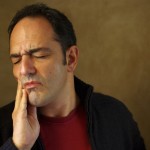
Dentine hypersensitivity is a common problem in adults a wide range or treatments have been used to address the condition.
The aim of this review was to compare the treatments used to treat dentine hypersensitivity (DH), based on its efficacy and effect duration.
Methods
Searches were conducted in the Medline/PubMed, Cochrane Library, Embase and ClinicalTrials databases for studies in English, Portuguese or Spanish. Randomised controlled trials (RCTs) assessing agents for treatment of dentine hypersensitivity evaluated using the evaporative method were considered. Two reviewers independently extracted data and assessed quality using the Cochrane risk of bias tool. Different follow up times were analysed separately.
Results
- 74 RCTs involving a total of 5366 patients were included.
- 36 studies were considered to be at low risk of bias, 29 at high risk and 7 at unclear risk
- 66 studies contributed to the quantitative analysis
- Most studies had more than one follow‐up time, but most were immediate (up to 1 day) or medium‐term (2‐7 days, 8‐15 days or 15‐30 days).
- 24 different agents were tested, the commonest agents were sodium fluoride, hydroxyapatite and laser
- At 1 day of follow‐up, all treatments promote a reduction in DH with Glass ionomer cements, resins, adhesives and lasers presented the best results.
- At 2 to 7 days and from 8 to 15 days, high values were reported in NaF groups, hydroxyapatite and laser groups, with DH reduction seen consistently in all the groups.
- From 15 to 30 days, glutaraldehyde together with resins, adhesives and Lasers presented the best results, with hydroxyapatite, arginine and NaF also presenting a significant reduction in DH‐associated pain.
- Between 1 month and until 3 months, hydroxyapatite, resins, adhesives, glass ionomer cements and lasers present several DH reductions above 80%, with all other treatments also presenting good results.
- For, 3‐6 months and more than 6 months, evaluation can only be made for some of the treatments due to a lack of studies. Hydroxyapatite, adhesives, glass ionomer cements and Lasers maintain a reduction of DH above 80%.
Conclusions
The authors concluded: –
All active ingredients show efficacy in DH reduction in different follow-up times. Only in-office treatments are effective in immediate DH reduction, maintaining its efficacy over time. For long-time effects, at-home treatments can also be used. More standardised evaluation protocols should be implemented to increase the robustly of the results.
Comments
We have looked at a number of reviews assessing treatments for dentine hypersensitivity (Dental Elf – Dentine Hypersensitivity blogs) with many concentrating on a single group of agents. This new review looked RCTs for all agents that have been used for the treatment of dentine hypersensitivity. The findings of this review suggest that all the agents used had some utility in the management of dentine hypersensitivity. These findings are similar to the 2015 review by West et al (Dental Elf – 30th Apr 2015) which included more RCTs because of the use of stricter inclusion criteria in the current review. This review looked at effects in different time frames although it could be argued that most patients would be interested in benefits lasting longer that 3 months although there are very few studies available that have follow up for that length of time. There is a need for more studies with longer follow up times as well as more studies involving direct comparisons of the agents that have shown to be more effective in reducing dentine hypersensitivity.
Links
Primary Paper
Marto CM, Baptista Paula A, Nunes T, Pimenta M, Abrantes AM, Pires AS, Laranjo M, Coelho A, Donato H, Botelho MF, Marques Ferreira M, Carrilho E. Evaluation of the efficacy of dentin hypersensitivity treatments-A systematic review and follow-up analysis. J Oral Rehabil. 2019 Oct;46(10):952-990. doi:10.1111/joor.12842. Epub 2019 Jul 12. Review. PubMed PMID: 31216069.
Other references
Dental Elf – 30th Apr 2015
Dental Elf – Dentine Hypersensitivity blogs
